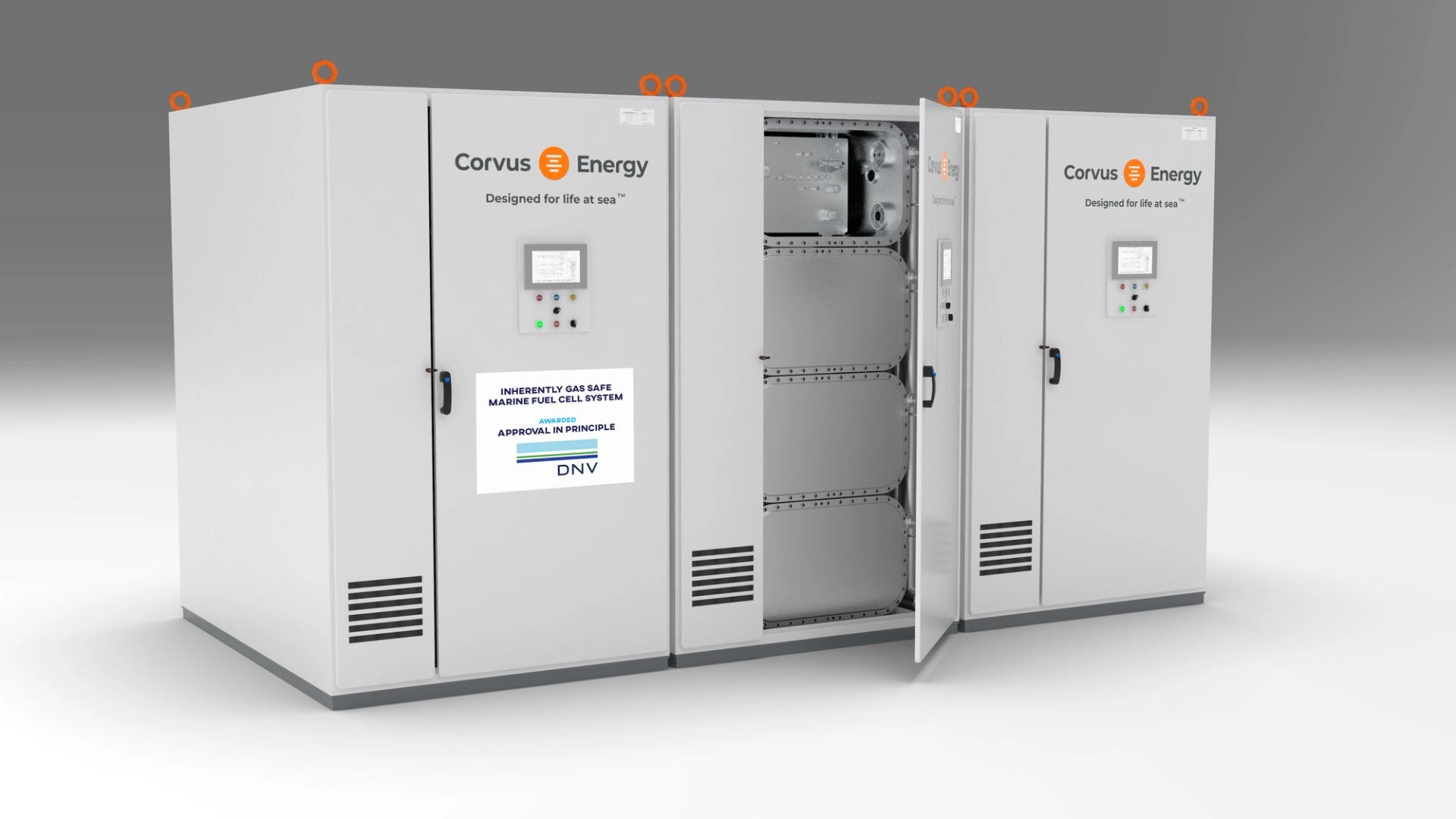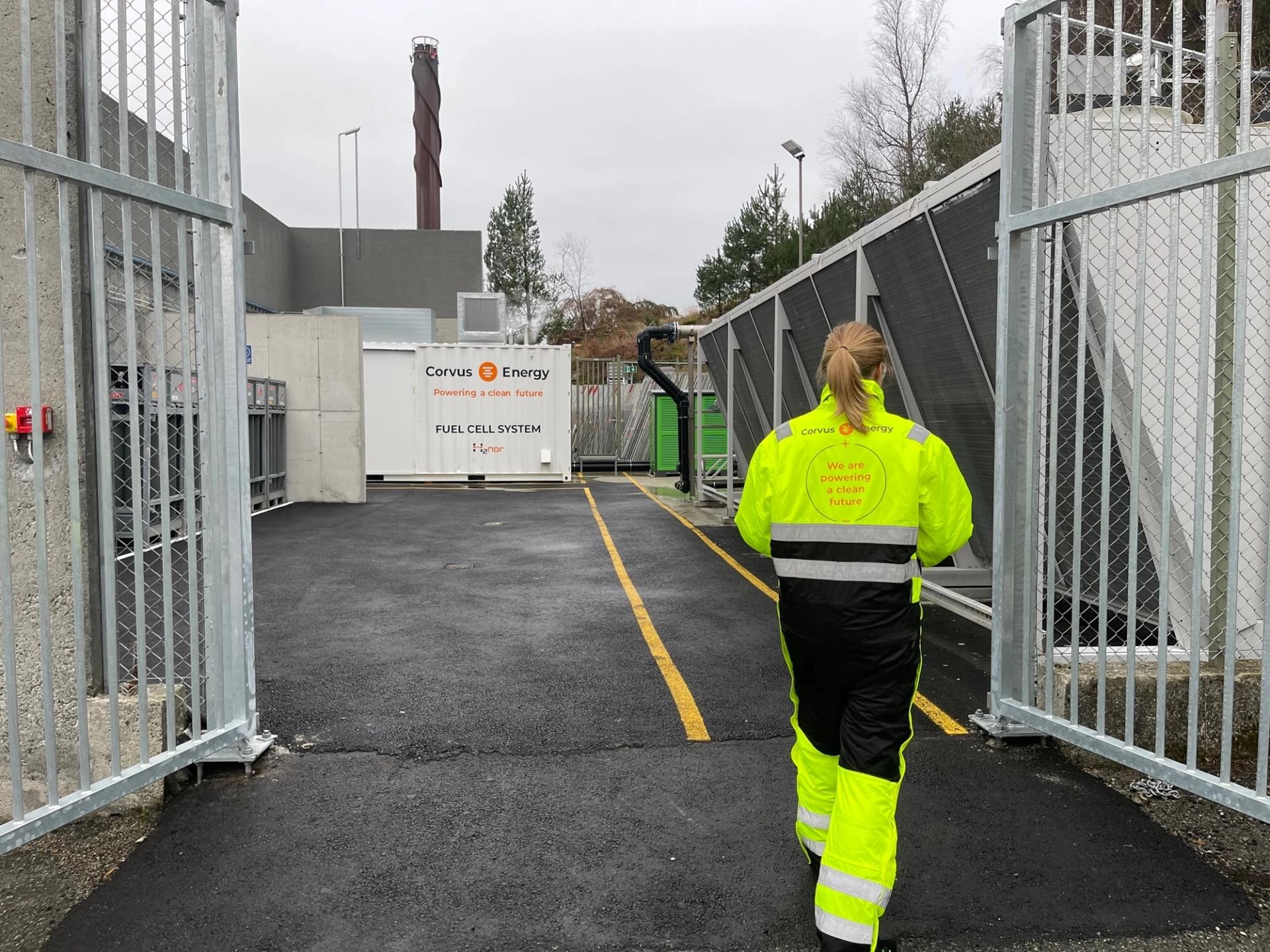H2NOR fast-tracks scalable maritime hydrogen fuel cell systems

"Toyota already mass produces fuel cells for cars. Corvus has proven clean battery technology for shipping. Along with our Norwegian maritime colleagues, we aim to dramatically extend the range on zero-emission shipping," says Thor Humerfelt, Senior Vice President Product Architect at Corvus Energy.
“We aim to dramatically extend the range on zero-emission shipping”
Thor Humerfelt
Senior Vice President Product Architect at Corvus Energy
The H2NOR project will develop and produce proton membrane exchange (PEM) fuel cell systems for the global shipping market. A first of their kind, the systems will be modularised and cost effective. The fuel cell system will work in tandem with the battery system on a hybridised vessel.
Fuel cells are a power conversion system that ideally are fuelled by a clean energy source, such as hydrogen, while batteries are energy storage units that can deliver or receive power instantaneously.
"Fuel cells and batteries complement each other well. We cannot reach zero emissions on battery power alone. In the case of H2NOR, we will use hydrogen fuel cells to extend the range of vessels," says Humerfelt.
H2NOR is scheduled to showcase its first fuel cell system on board a vessel in 2023. The product will be marine certified and available for commercial delivery in 2024. When completed, the project will represent an important step in achieving the IMO’s goal to reduce greenhouse gas emissions from shipping by 50 per cent by 2050.
Toyota knocked on Corvus' door
As experts in green battery systems, Corvus Energy has long recognised the limitations of battery power for deep sea vessels.
"Since 2019 we have been discussing how to extend the vessel range beyond the capacity of a battery system. We began to look for a partner, and then Toyota approached us, asking us to make maritime fuel cell systems from their fuel cell modules," explains Humerfelt.
“Toyota’s hydrogen strategy is to explore and enter new markets like the maritime industry”
Federico Paravicini
Fuel Cell Business Manager at Toyota Motor Europe.
"Toyota’s hydrogen strategy is to explore and enter new markets like the maritime industry in collaboration with field partners that understand maritime customer requirements and have strong expertise in regulation, to ensure success," says Federico Paravicini, Fuel Cell Business Manager at Toyota Motor Europe.
Toyota is one of the world’s largest fuel cell producers, with 30 years of experience in development and production of fuel cells for cars and other land-based applications. The company knows how to mass produce fuel cells, which is crucial for making marine fuel cell systems scalable.
Corvus and Toyota signed a partnership agreement on 18 December 2020, which gives Corvus access to Toyota’s PEM cell fuel modules while enabling large-scale production and competitive pricing. "The potential for a cost advantage is high. Toyota deals in huge numbers, and we have the robotics. This is a good opportunity to scale up and reduce costs," says Humerfelt.

A heavyweight team
To realise the project, Corvus secured EUR 5.9 million in funding from Innovation Norway and the Research Council of Norway. Then it gathered a team of Norwegian maritime experts. Among them is LMG Marin, a green maritime ship designer. “We jumped at the opportunity to work with Corvus,” says Torbjørn Bringedal, Managing Director at LMG Marin.
LMG Marin has important experience to share in its own right as the designer of the MF Hydra, the world’s first hydrogen-powered ferry.
“H2NOR is a way to get maritime hydrogen fuel cells integrated within a ship hull based on a product and to develop large-scale production capacity. It’s one thing to have a product that is safe, but it’s crucial to have sufficient capacity to produce fuel cells to meet expected demand in the maritime sector. We need to move from kilowatts to megawatts,” he adds.
Other big-name partners include Equinor, Norled, Wilhelmsen, Maritime CleanTech and the University of South-Eastern Norway.

Hydrogen safety front and centre
As an energy source, green hydrogen has many benefits: kilo for kilo, it contains almost three times as much energy as fossil fuels, and when used as a fuel its only by-products are water vapour and warm air. It is also the most abundant element in the universe.
“We are building an inherently gas-safe design so that hydrogen fuel cells can be used safely anywhere on board”
Sonja Vernøy Hansen
Marketing Communications Director at Corvus Energy
But there is no doubt that hydrogen is explosive.
This is why H2NOR has tripled down on safety. The project works closely with DNV, Norway’s international classification society, which has the world’s strictest maritime safety standards. So far, the Corvus system has received Approval in Principle from DNV, the first step towards full safety certification.
"We are building an inherently gas-safe design so that hydrogen fuel cells can be used safely anywhere on board, including below deck. This will give ship designers more freedom to innovate," says Sonja Vernøy Hansen, Marketing Communications Director at Corvus Energy.
Effective international partners
There are good reasons that Toyota looked to Norway for a green maritime partner. Vernøy Hansen names several of these:
"We are global technology leaders in green maritime, with cutting-edge R&D. We have high-quality maritime clusters, critical parts of the value chain, and resources for accelerating new technologies."
Moreover, the Norwegian government stands behind the industry’s efforts with both policy and funding, including a programme to establish green hydrogen infrastructure along the Norwegian coastline.
"Norway has a stable democracy with strong public support for sustainable solutions. This makes us an excellent global partner in green maritime," concludes Humerfelt.

